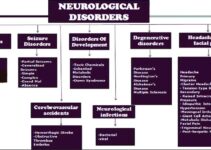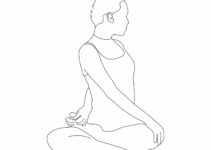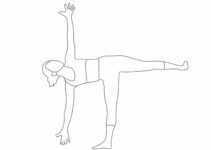Why yoga for allergies?
However, people ignore allergy often despite its not being a simple health condition. The severity of the allergy can be experienced or heard by the sufferers. In the case of allergy, the eyes become reddish with a more significant amount of itching in the border area of the eyesight. The face becomes swollen and experiences a regular nasal blockage. Frequent sneezing and watering from the eyes and nose are common. Overall, the patients are in completely uncomfortable positions. Many factors are responsible for allergies, such as du, st, food, pollen, moulds, air-borne, dog, cat, mushroom, soy, and gluten. As far as its prevention and management are concerned, there are ways, including yoga, to control it naturally. Yoga can be vital in minimising the impact of allergy and its associated conditions like sinus, sneezing, and watery eyes and nose. So, please practice yoga and yoga therapy to get relief from allergies and also prevent seasonal sneezing, sinus, and watery nose and eyes.

What are the symptoms of allergy?
- Body itching
- Nasal blockage
- Puffy face
- Watery eyes and nose
- Eye reddish
- Continuous sneezing and wheezing
- Itching at the border area of the eyes
- Losing consciousness and dizziness
- Breathing problems
- Sneezing and wheezing
- Nasal congestion
What are the causes of allergy?
- Food allergies to peanuts, pecans, pistachios, pine nuts, walnuts, etc.
- Latex sensitivity
- Hereditary
- Hives
- Pollution
- Redness
- Swelling (edema)
- Nausea
- Sneezing
- Foods trigger allergy, i.e. eggs, milk, wheat, soy, peanuts, and fish
10 Yoga poses for allergy relief
The practice of yoga can play an important in the prevention and management of allergy. Regular exercise will also solve the issues forever by boosting the body’s immunity and thus checking ailments and diseases.
- Jal neti (Nasal cleansing with water): Jal neti is quite effective in clearing the nasal and respiratory passages. This yogic process rubs the nasopharyngeal mucosa. Thereby, the dried-up secretions are scrubbed off. The aqueous solutions of salt also result in the dissolving of many accumulations produced either from retained secretions or deposits from the inhaled air. The cleansing effect of Jal neti benefits not only the nasopharynx but also the eyes and various sinuses. The cleansing of the nasal passage would automatically improve the drainage of the secretions of the eyes. Similarly, it keeps the sinuses healthy by flushing the mucus out of them.
- Sutra Neti (Nasal cleansing with thread): Sutra Neti stimulates the nerves and improves functions of the eyes, tear ducts, and olfactory zone in the brain. Using slightly hypertonic saline in sutra neti has the additional effect of causing mild irritation to the mucosa. This increases circulation in the mucous membrane and augments the secretions of the epithelial cells, whereby the openings of the glands are cleaned. It opens the tear duct, which at one end opens into the nose.
- Kapalbhati (Frontal brain cleansing): Kapalbhati clears the respiratory passage and keeps it free from impurities and excess mucus. It helps treat colds, rhinitis (inflammation of the mucus membrane of the nose), sinusitis, and bronchial infections. It purifies the frontal air sinuses and stimulates the brain. Kapalbhati is also quite effective in combating sneezing if it is practised regularly.
- Nadishodhan pranayama (Alternate nostril breathing): Nadishodhan pranayama benefits allergy patients. Nadishodhan pranayama purifies the nasal passage by removing the blockages from the respiratory tract and facilitating the free flow of air into the lungs. It strengthens the immunity system, reduces anxiety and stress and helps to manage hypertension. Regular practice ensures the prevention of asthma and allergies.
- Suryabhedi pranayama: Suryabhedi pranayama makes your nasal mucous and congestion-free. The regular practice of this yoga pose helps to cure rhinitis, cephalalgia, and various kinds of neuralgia. It removes worms that are found in the frontal sinuses, too.
- Bhastrika pranayama: It’s quite a powerful pranayama to relieve sinus, sneezing, and other allergies. It helps to ease inflammation of the throat. It destroys phlegm, removes diseases of the nose and chest, and eradicates asthma. It removes all conditions arising from excess wind, bile, and Phlegm and gives warmth to the body (H.P. 2/65).
- Sarvangasana (Shoulder stand yoga ): The yoga pose is beneficial in combating allergy, sinus, watery nose & eyes, and other allergy-associated problems. It helps to speed up blood flow to the head region and provides sound health to the ENT region.
- Surya Namaskar (Sun Salutation): Surya Namaskar is highly beneficial to the lungs and the respiratory system. It appropriately expands and contracts the air sacs or alveoli of the lungs and prevents the building up of germs and many diseases of the respiratory system. The 12 yoga poses in the sun salutation are solely enough to fight against allergies and other health conditions.
- Ustrasana (Camel Pose): The adequate stretching in the chest region enables the lungs and muscles to expand at the optimal level. It is a good yoga pose for those people who have asthma, bronchitis, and other lung ailments, thereby relieving congestion.
- Bhujangasna (Cobra pose): The cobra pose ensures chest expansion and optimal lung stretching, thereby helpful in expanding the lung’s internal region. It helps exchange gases through the nasal passage and is beneficial for decongesting the nasal passage.
8 tips to treat allergy naturally
- Herbal oil massage shows promising results in treating different forms of allergies.
- Ginger root tea is beneficial for respiratory and skin conditions
- Applying ground almond leaves over the ENT regions effectively provides a soothing effect.
- The use of coconut oil and lemon juice is beneficial to fight allergies.
- The drinking of juices of carrots, beetroot, and cucumber prevents allergy and its associated conditions beyond a specific limit.
- Warm water gargling with salt helps treat running nose and sneezing.
- The allergic person with inflamed eyes may use lime, mallow, and chamomile tea.
- In the case of a congested and inflammatory nose, it is better to use peppermint tea to overcome the seasonal allergy.
Top 10 allergy prevention tips
- A hot shower should be used as it is helpful to ward off the allergen.
- Cleanliness is the most critical need to prevent it.
- The use of carpet may be avoided as it is dust-prone.
- Vacuum cleaner should be preferred as it filters dust.
- Mask should be used while cleaning.
- Keep yourself away from pets.
- Use an exhaust fan.
- Eatable should be kept in a tight container.
- Care for your pet hygienically.
- Avoid pollutants, as airborne matter may trigger an allergic condition.






Such an interesting article about managing allergies, naturally. Great job!